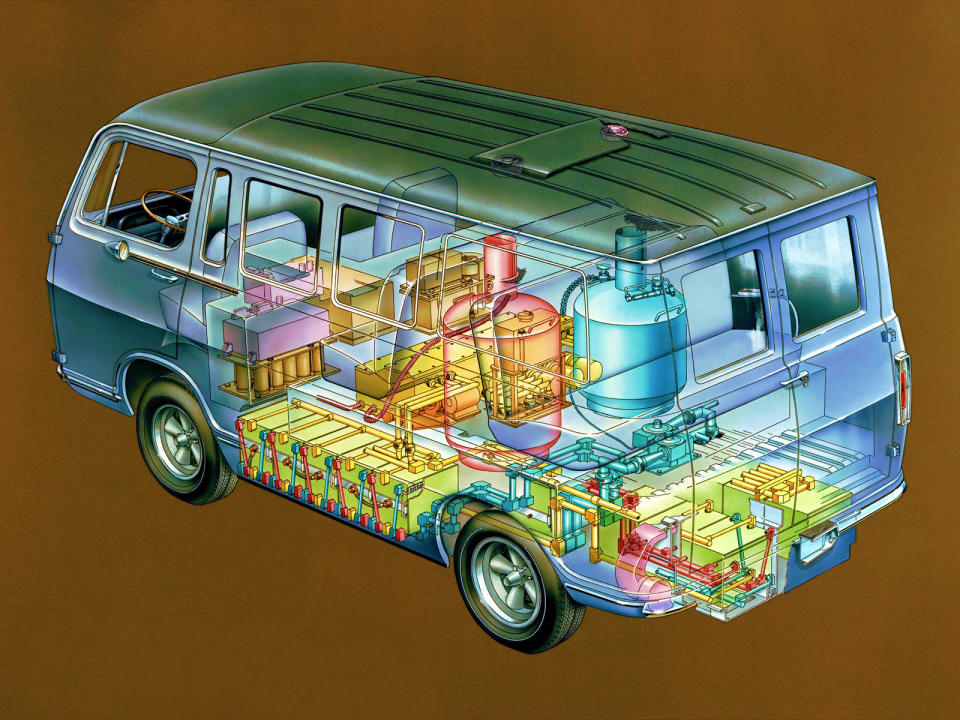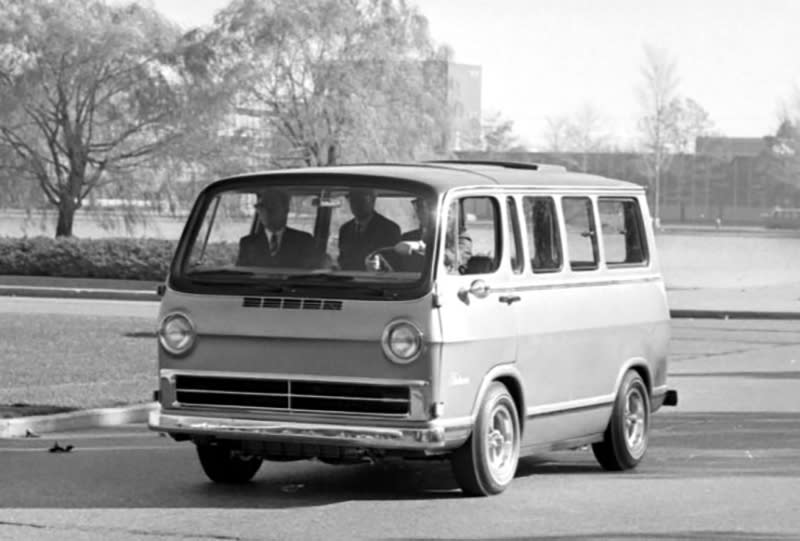The World's First Fuel Cell Road Vehicle Just Turned 50

While the concept of the fuel cell was first demonstrated in 1801, the world had to wait until 1959 to see a vehicle–namely a Allis-Chalmers farm tractor–move under fuel cell power. But in 1962, when Kennedy challenged NASA to safely land a man on the moon before the end of the decade, America's brightest got busy, trying to figure out how this technology could power a manned space flight. General Motor set to work in January 1966 with a 200-strong team, and 10 months later, this two-seater Electrovan emerged, with up to 150 miles of range.

Based on a GMC Handi-Van and weighing an enormous 7200 lbs., GM's prototype used proton-exchange membrane technology with 32 thin-electrode fuel cells mounted on the floor, interconnected with 550 feet of plastic piping. The team also had to sacrifice all the cargo space in the back for the separate tanks containing liquid oxygen, liquid hydrogen and potassium hydroxide.
The Electrovan never left GM's proving ground, despite completing a successful demo for the Progress of Power press conference in October, 1966 and having a highway-friendly top speed of 70 mph.
Following the end of the project, the prototype was stored in a warehouse in Pontiac, Michigan, before being rediscovered in 2001. Since then, the Electrovan lives in the General Motors Heritage Center.
GM put more than $2.5 billion into hydrogen fuel cell development over the last half a century, teaming up with Honda in 2013, who happen to be the biggest experts in the field next to Toyota.
The first fuel-cell vehicle to be approved for American roads by the Environmental Protection Agency and the California Air Resources Board was the Honda FCX-V4 in 2002, while GM's latest hydrogen-powered prototype is a badass pickup truck for the US Army.
With the Japanese, Korean, German and American manufacturers all pushing hard for it to happen, it's only a matter of time before the infrastructure gets ready to support our hydrogen needs.

You Might Also Like

 Yahoo Autos
Yahoo Autos 